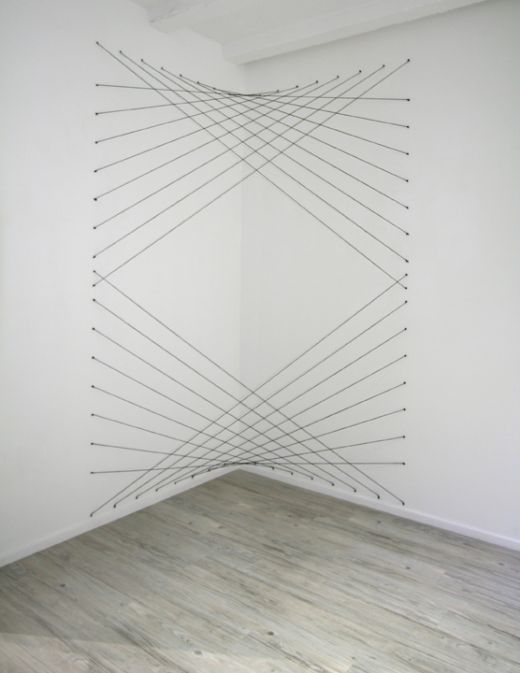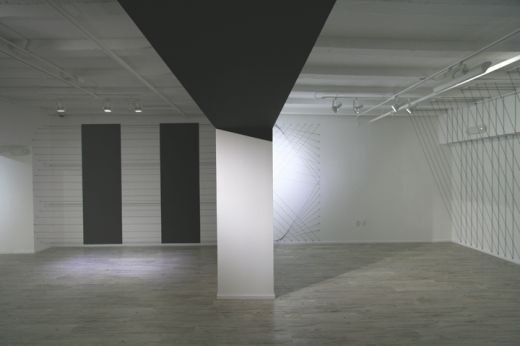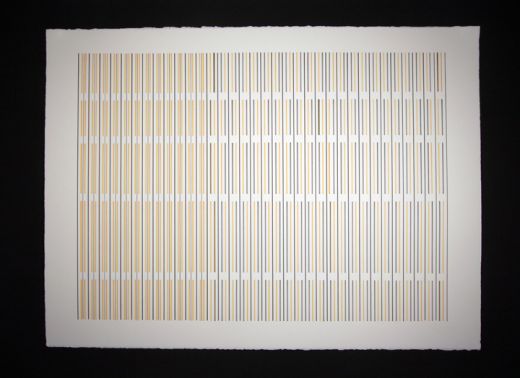
Karen Rifas,Corner, Black Cord, 2014. Black Cord, 8.5' x 67" x 42".
May 5th – July 14th, 2014
As a high school student flipping around in my AP art history textbook, I would return to group of thumbnail-size paintings of trees by a young Mondrian. In his affected geometric handling of the branches and leaves, you saw where he was headed. The series of paintings represent less the Modernist program than an artist developing his style, slowly paring away of the inessential. Karen Rifas has done a lot of paring as well.
Over the past three decades, the Miami-based artist and teacher has moved from sculptures made of bronze and piles of fallen leaves gathered in her backyard, to pieces in which the leaves were delicately threaded on string, to pieces consisting solely of colored cord. Rifas has exhibited these cord pieces to the point that many consider them her signature. Limiting herself to the Mondrianian palette of red, yellow, black, and white, she pays attention to how the eye traces the room and installs her works accordingly. Sometimes they hover in the room, more ideal than actual, but other times the rough weave of the cord (provided by Miami Cordage) and the knots drag the sculptures to the ground.

Installation view of Rifas’s cord pieces and painted architectural element.











